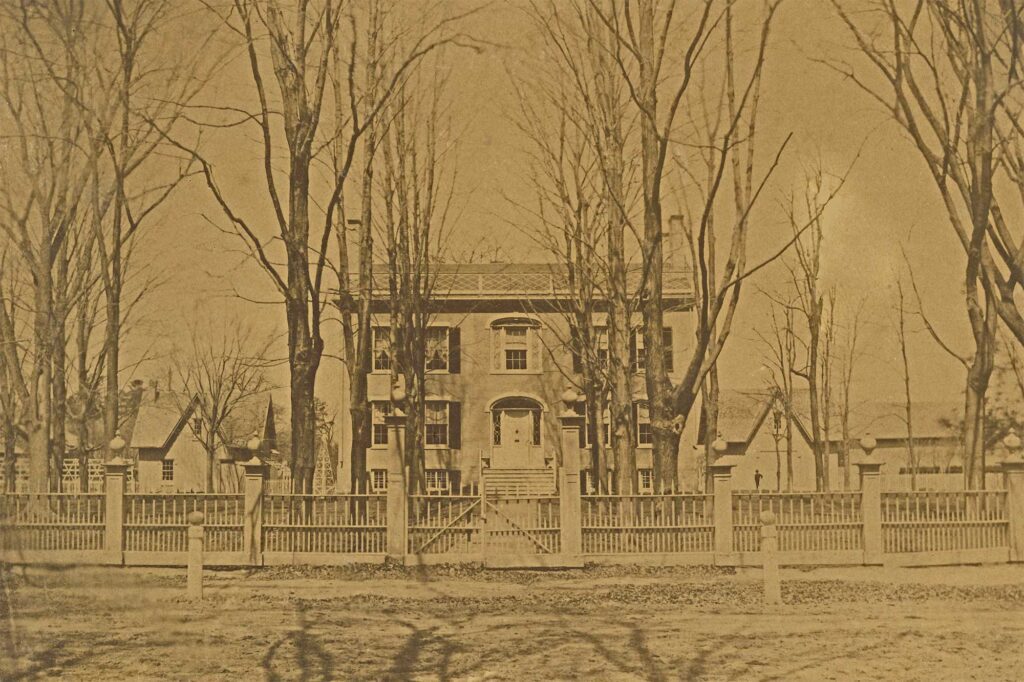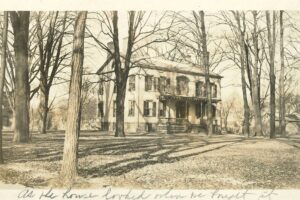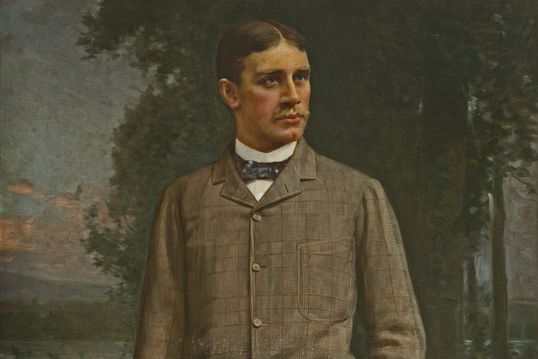James Vanderpoel House
One of the finest examples of Federal architecture in Columbia County, the James Vanderpoel House was constructed circa 1819–1820 for prominent Kinderhook lawyer and judge James Vanderpoel.
Trimmed with marble and built with local brick, the side-gabled structure has two stories, five bays, and rests on a fieldstone foundation. Symmetry and graceful architectural details are found throughout the home. Purchased by the Columbia County Historical Society in 1925, the property is now preserved as an exhibition space showcasing paintings and decorative arts from the CCHS permanent collection, and is home to the CCHS Museum Store & Bookshop.
Visitor Information
Location: 16 Broad Street, Kinderhook, NY
Hours: Saturdays 9 am to 4 pm
Admission: Adults $5; free for students, children, active military & family with current ID and CCHS Members.
Admission to the Mercantile at the Vanderpoel House is free.
CLOSED UNTIL June 28, 2025
On View

Dirt Road Life
Featuring an extensive display of vintage photographs from the collections of CCHS and Red Rock Historical Society and the artistic photographs of local high school students, this exhibit documents and contrasts 19th century and contemporary life along the 59-mile network of dirt roads that criss-cross the Chathams in Columbia County.

New York Portraits from the Permanent Collection at the Vanderpoel House
Columbia County’s painted portraiture legacy spans more than three centuries of historically significant or artistically important works by self-taught, naïve and itinerant painters as well as important artists of the time.
Mercantile at the Vanderpoel House
Opens April 27th
History of the James Vanderpoel House

Judge James Vanderpoel was born in 1787 in Chatham, New York. As a young man, he studied at Kingston Academy and read law under Francis Silvester in Kinderhook, where he would open a law office and become a respected civic leader.
In 1808 he married Anna Doll (b. 1781) of Kingston, and together they had six children. In 1810, Vanderpoel was elected to the New York State Assembly and later succeeded his friend and colleague Martin Van Buren as Columbia County surrogate.
As Vanderpoel settled in Kinderhook with his wife and growing family, he sought a house to match his success and stature. The home would embody each of the defining characteristics of Federal architecture that was fashionable at the time: symmetrical forms, geometric concepts and subtle ornamentation inspired by Greek and Roman motifs. The Dutch stoop at the front and rear entrances hint at both Kinderhook’s and Vanderpoel’s Dutch heritage.
Vanderpoel traveled in the same Kinderhook social circle as Martin Van Buren, who visited the house according to first-hand reports of the time. Van Buren’s second son, John Van Buren, married Elizabeth Vanderpoel, the eldest child of James and Anna Vanderpoel.
In 1833, Vanderpoel was appointed Columbia County Judge and he moved his family to Albany. Vanderpoel sold this house to Ashley Scovel who in turn sold the home to Major Mordecai Myers in 1834. Myers, a noted figure in the War of 1812, lived with his wife and ten children in the house until 1842. That year, Thomas M. Burt and his wife, Lydia Burt, purchased the house, and moved in with their four sons and daughter. Along with live-in servants and a niece, the Burt Family lived in this house until Thomas Burt’s death in 1873. Following the Burts’ residency, the house had a succession of owners, and even operated for a period as a boarding house.
The "House of History"

After a several-year search for an antique “House of History” for their meetings, library, exhibitions and growing historical collection, The Daughters of Columbia County Historical Society (precursor to the Columbia County Historical Society) purchased the property in 1925. No original furnishings remained at the time of the CCHS purchase. After an ambitious restoration, the home was opened to the public as the “House of History” in 1932.
Preservation remains an ongoing priority at the James Vanderpoel House. In our nearly 100 years of stewardship, CCHS has undertaken several restoration projects to both protect the house against further degeneration and reverse the effects of past restorations that used now-obsolete methods, returning this grand structure to its original Federal splendor.

Become a Member
Get free access to our historic properties and library, discounts at our museum shop, reciprocal benefits to partner museums, and more — all while championing the preservation of Columbia County history.
Land Acknowledgement
Our sites are located on ancestral lands of the Muh-He-Con-Neok, “the People of the Waters that Are Never Still”. Called Mohicans by the English, these people are now officially known as the Stockbridge-Munsee Community. They have a rich and illustrious history which has been retained through oral tradition and the written word.
